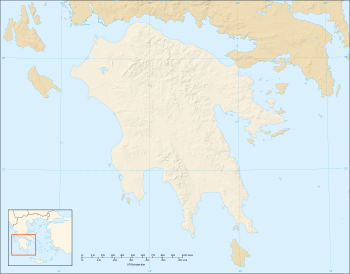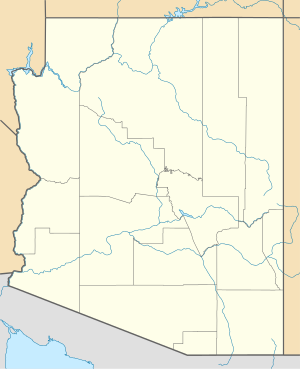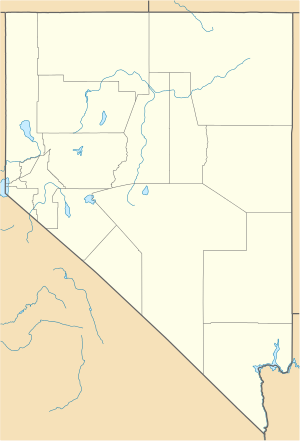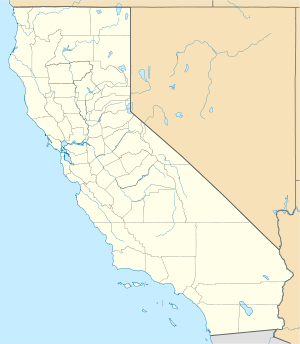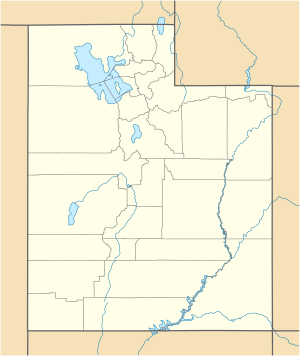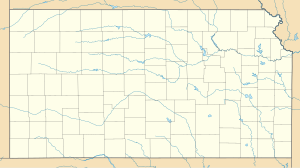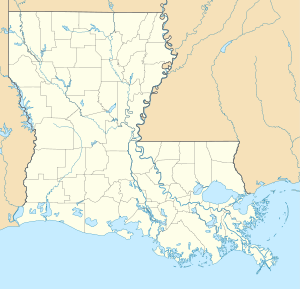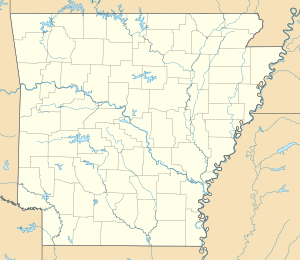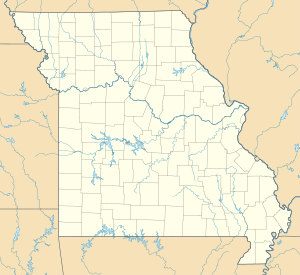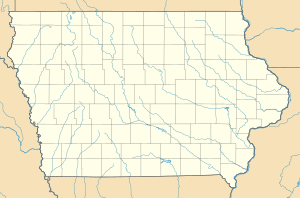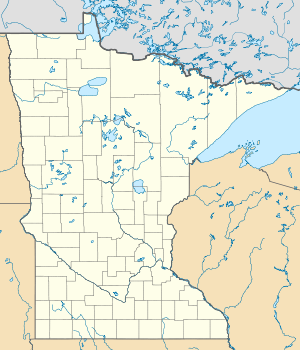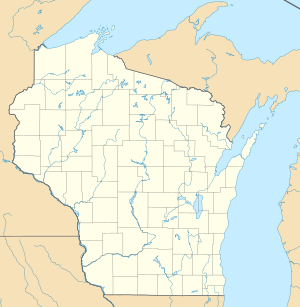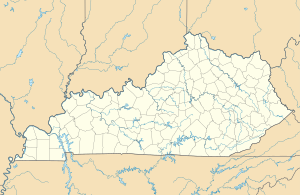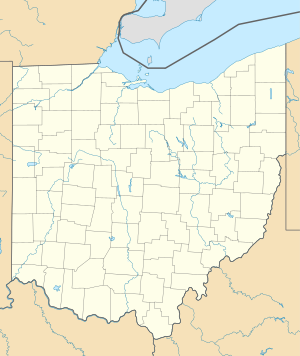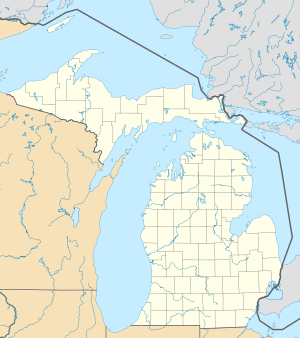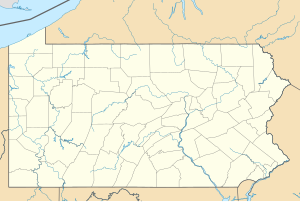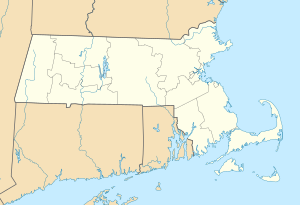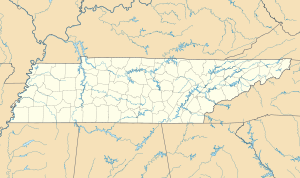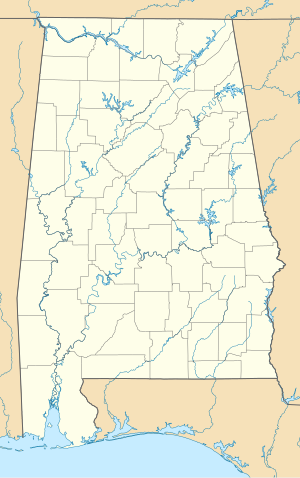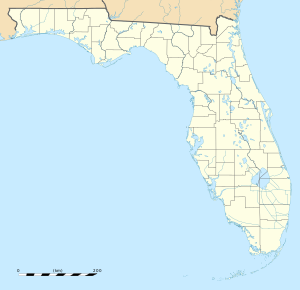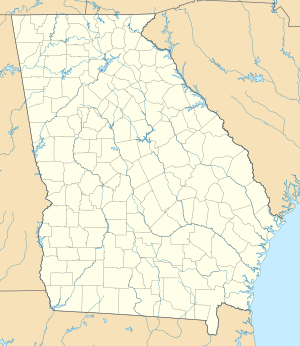1996 Summer Olympics torch relay: Difference between revisions
Reschultzed (talk | contribs) No edit summary |
Reschultzed (talk | contribs) No edit summary Tag: Disambiguation links added |
||
| Line 138: | Line 138: | ||
At [[Julesburg, Colorado|Julesburg]], the torch was picked up by riders of the [[National Pony Express Association]], who carried it (along with a bag of commemorative letters addressed to patients at a children's hospital) on horseback to [[St. Joseph, Missouri]]. Like the original [[Pony Express]], the riders traveled non-stop for 58 hours straight, from 9 p.m. on May 13 to 7 a.m. on May 16. While relay organizers had chosen this particular segment of the historic Pony Express route because it mostly ran alongside modern roads which could accommodate the caravan of support vehicles,<ref name=pony-express-stops>Chilcote, Gary. [https://www.newspapers.com/clip/79110672/ "Torch run follows mail trail"], ''[[St. Joseph News-Press]]'', May 13, 1996, page 1B.</ref> road conditions forced them to separate from the torch-bearing riders for some stretches.<ref>Longino, Miriam. [https://www.newspapers.com/clip/145619302/ "As the flame rides the trail, crew relaxes a bit"], ''[[Atlanta Journal-Constitution]]'', May 16, 1996, page G4.</ref><ref name=long-trip>[https://www.nytimes.com/1996/07/07/magazine/sunday-july-7-1996-the-olympics-atlanta-needs-flame-notes-from-a-long-torch-trip.html "Atlanta Needs Flame! Notes From a Long Torch Trip"], ''[[The New York Times Magazine]]'', July 7, 1996, Web. Retrieved April 18, 2024.</ref> At [[Rock Creek Station]] near [[Endicott, Nebraska|Endicott]], a horse was spooked and threw its rider, causing another torch to be broken.<ref>[https://www.newspapers.com/clip/145619067/ "Horse pitches a fit, breaks Olympic torch"], [[Associated Press]], via ''[[Macon Telegraph]]'', May 16, 1996, page 1C.</ref> |
At [[Julesburg, Colorado|Julesburg]], the torch was picked up by riders of the [[National Pony Express Association]], who carried it (along with a bag of commemorative letters addressed to patients at a children's hospital) on horseback to [[St. Joseph, Missouri]]. Like the original [[Pony Express]], the riders traveled non-stop for 58 hours straight, from 9 p.m. on May 13 to 7 a.m. on May 16. While relay organizers had chosen this particular segment of the historic Pony Express route because it mostly ran alongside modern roads which could accommodate the caravan of support vehicles,<ref name=pony-express-stops>Chilcote, Gary. [https://www.newspapers.com/clip/79110672/ "Torch run follows mail trail"], ''[[St. Joseph News-Press]]'', May 13, 1996, page 1B.</ref> road conditions forced them to separate from the torch-bearing riders for some stretches.<ref>Longino, Miriam. [https://www.newspapers.com/clip/145619302/ "As the flame rides the trail, crew relaxes a bit"], ''[[Atlanta Journal-Constitution]]'', May 16, 1996, page G4.</ref><ref name=long-trip>[https://www.nytimes.com/1996/07/07/magazine/sunday-july-7-1996-the-olympics-atlanta-needs-flame-notes-from-a-long-torch-trip.html "Atlanta Needs Flame! Notes From a Long Torch Trip"], ''[[The New York Times Magazine]]'', July 7, 1996, Web. Retrieved April 18, 2024.</ref> At [[Rock Creek Station]] near [[Endicott, Nebraska|Endicott]], a horse was spooked and threw its rider, causing another torch to be broken.<ref>[https://www.newspapers.com/clip/145619067/ "Horse pitches a fit, breaks Olympic torch"], [[Associated Press]], via ''[[Macon Telegraph]]'', May 16, 1996, page 1C.</ref> |
||
The torch traveled southward from St. Joseph into [[Kansas City, Missouri]], then across Kansas and Oklahoma. The relay route, as initially announced, included a stop in [[Yale, Oklahoma]], which organizers described as the "birthplace" of [[Jim Thorpe]]. Thorpe was actually born in [[Pottawatomie County, Oklahoma]], near the town of [[Prague, Oklahoma|Prague]], and about 50 miles away from Yale, where Thorpe lived briefly as an adult.<ref name="nytimes-wrongturn">{{cite news |title=OLYMPICS: Torch Run Takes a Wrong Turn |url=https://www.nytimes.com/1995/12/09/sports/olympics-torch-run-takes-a-wrong-turn.html |newspaper=[[The New York Times]] |date=9 December 1995 |accessdate=7 May 2012 |first=Jere |last=Longman}}</ref> Residents of Prague protested the decision and asked for the torch to be rerouted to their town. The relay organizers resisted these requests at first, saying that the route had already been carefully planned and could not be significantly altered,<ref>Hutchison, Mark A. [https://www.newspapers.com/clip/145419635/ "Route Inflames Thorpe Fans; Torch Panel Unmoved"], ''[[The Oklahoman]]'', November 13, 1995, front page and [https://www.newspapers.com/clip/145419679/ page 2].</ref><ref>Kindred, Dave. [https://www.newspapers.com/clip/145419716/ "Dishonoring Jim Thorpe"], ''[[Atlanta Journal-Constitution]]'', December 1, 1995, page C4.</ref> but ultimately agreed to visit both Yale and Prague.<ref>[https://www.oklahoman.com/story/news/1996/03/01/torch-run-sites-announced-olympic-committee-adds-prague-ok-to-list/62362935007/ "Torch Run Sites Announced; Olympic Committee Adds Prague, OK, to List"], [[Associated Press]], via ''[[The Oklahoman]]'', March 1, 1996, Web.</ref> |
The torch traveled southward from St. Joseph into [[Kansas City, Missouri]], then across Kansas and Oklahoma. The relay route, as initially announced, included a stop in [[Yale, Oklahoma]], which organizers described as the "birthplace" of [[Jim Thorpe]]. Thorpe was actually born in [[Pottawatomie County, Oklahoma]], near the town of [[Prague, Oklahoma|Prague]], and about 50 miles away from Yale, where Thorpe lived briefly as an adult.<ref name="nytimes-wrongturn">{{cite news |title=OLYMPICS: Torch Run Takes a Wrong Turn |url=https://www.nytimes.com/1995/12/09/sports/olympics-torch-run-takes-a-wrong-turn.html |newspaper=[[The New York Times]] |date=9 December 1995 |accessdate=7 May 2012 |first=Jere |last=Longman}}</ref> Residents of Prague protested the decision and asked for the torch to be rerouted to their town. The relay organizers resisted these requests at first, saying that the route had already been carefully planned and could not be significantly altered,<ref>Hutchison, Mark A. [https://www.newspapers.com/clip/145419635/ "Route Inflames Thorpe Fans; Torch Panel Unmoved"], ''[[The Oklahoman]]'', November 13, 1995, front page and [https://www.newspapers.com/clip/145419679/ page 2].</ref><ref>Kindred, Dave. [https://www.newspapers.com/clip/145419716/ "Dishonoring Jim Thorpe"], ''[[Atlanta Journal-Constitution]]'', December 1, 1995, page C4.</ref> but ultimately agreed to visit both Yale and Prague.<ref>[https://www.oklahoman.com/story/news/1996/03/01/torch-run-sites-announced-olympic-committee-adds-prague-ok-to-list/62362935007/ "Torch Run Sites Announced; Olympic Committee Adds Prague, OK, to List"], [[Associated Press]], via ''[[The Oklahoman]]'', March 1, 1996, Web.</ref><ref>Kindred, Dave. [https://www.newspapers.com/clip/145657352/ "Town's fight for Thorpe's legacy earns spot on torch path"], ''[[Atlanta Journal-Constitution]]'', May 19, 1996, page E13.</ref> |
||
In [[Oklahoma City, Oklahoma|Oklahoma City]], the torch was carried by first responders to the [[Oklahoma City bombing]] a year earlier.<ref>Downey, Maureen. [https://www.newspapers.com/clip/145657619/ "Relay honors bomb victims, survivors"], ''[[Atlanta Journal-Constitution]]'', May 20, 1996, page D4.</ref> Between [[Waco, Texas|Waco]] and [[Bryan, Texas]], it was flown on a 1943 [[Stearman Aircraft|Stearman]] [[biplane]].<ref name=wapo-travels>[https://www.washingtonpost.com/wp-srv/sports/olympics/longterm/torches/travels.htm "'96 Torch Travels by Train, |
|||
The torch visited [[Oklahoma City, Oklahoma|Oklahoma City]], [[Dallas, Texas|Dallas]], and [[Houston, Texas|Houston]] on its way southward to the [[Gulf Coast]]. While the relay went without any major mishaps, there was need for a 15-mile diversion on the route between [[Baton Rouge]] and [[New Orleans]] – a {{convert|310000|USgal}} gasoline spillage in [[Gramercy, Louisiana]], necessitated the detour.<ref name="NYT" /> |
|||
Plane ... and Pony Express"], [[Atlanta Committee for the Olympic Games]], via the ''[[Washington Post]]'', Web, undated. Retrieved April 19, 2024.</ref><ref name=waco/> |
|||
In [[Houston, Texas|Houston]], the route met the [[Gulf Coast]] and continued eastward. A {{convert|310000|USgal}} gasoline spillage in [[Gramercy, Louisiana]], forced the relay to skip the town and take an unexpected {{convert|15|mi|km|adj=on}} detour along [[Interstate 10 in Louisiana|Interstate 10]].<ref name="NYT" /><ref>[https://www.newspapers.com/clip/145660126/ "Pipeline rupture reroutes torch"], [[Associated Press]], via ''[[Southwest Daily News]]'', May 25, 1996, pages 1 and [https://www.newspapers.com/clip/145660183/ 2].</ref> The torch rode on the historic [[St. Charles Streetcar Line|St. Charles Streetcar]] in [[New Orleans]].<ref name=wapo-travels/> Sister [[Helen Prejean]] ran with the torch in New Orleans.<ref>Pousner, Howard. [https://www.newspapers.com/clip/145663481/ "Revelers throng streets of Big Easy to greet relay"], ''[[Atlanta Journal-Constitution]]'', May 25, 1996, page D9.</ref> |
|||
From New Orleans, the torch was transported mostly by rail through Mississippi and Arkansas, passing through [[Memphis, Tennessee|Memphis]] and roughly following the [[Mississippi River]] northward. Starting from the [[Gateway Arch]] in St. Louis, the torch was intended to board the ''[[American Queen]]'', the recently-built river [[steamboat]] which was the largest of its kind in history, to be transported up the Mississippi to [[Hannibal, Missouri]], best known as the boyhood home of [[Mark Twain]].<ref name=wapo-travels/> However, due to flooding on the river that prevented the ''American Queen'' from reaching St. Louis for the journey, an alternative route had to be devised that would still allow the torch and hundreds of honored guests to spend a day on the river. As a result, after reaching St. Louis, the torch was driven on a bus back down to [[Paducah, Kentucky]], then rode on the ''American Queen'' from Paducah to [[Cairo, Illinois]], before being bussed again to Hannibal.<ref>Pousner, Howard. [https://www.newspapers.com/clip/145666162/ "Riverboat gamble: Team scrambles for new route as the Mississippi rises"], ''[[Atlanta Journal-Constitution]]'', May 29, 1996, page C3.</ref><ref>Pousner, Howard. [https://www.newspapers.com/clip/145666300/ "River fails to extinguish flame's appeal"], ''[[Atlanta Journal-Constitution]]'', May 31, 1996, page E3.</ref> |
|||
Former U.S. president [[Jimmy Carter]] was originally slated to carry the torch in his hometown of [[Plains, Georgia]] on July 12, a controversial inclusion given that Carter had led the [[1980 Summer Olympics boycott]] against the Soviet Union while he was president. However, Carter later canceled his participation, choosing to accept an award from [[Lions Clubs International]] in [[Montreal]] that day instead.<ref>Pousner, Howard. [https://www.newspapers.com/clip/145600955/ "Flame warms the hearts of big crowds"], ''[[Atlanta Journal-Constitution]]'', May 4, 1996, page C8.</ref> |
Former U.S. president [[Jimmy Carter]] was originally slated to carry the torch in his hometown of [[Plains, Georgia]] on July 12, a controversial inclusion given that Carter had led the [[1980 Summer Olympics boycott]] against the Soviet Union while he was president. However, Carter later canceled his participation, choosing to accept an award from [[Lions Clubs International]] in [[Montreal]] that day instead.<ref>Pousner, Howard. [https://www.newspapers.com/clip/145600955/ "Flame warms the hearts of big crowds"], ''[[Atlanta Journal-Constitution]]'', May 4, 1996, page C8.</ref> |
||
| Line 150: | Line 155: | ||
==Route in the United States== |
==Route in the United States== |
||
In the table below, only those locations where the torch was carried on foot, or otherwise stopped for a celebration, are listed. All locations are confirmed by the relay's official website as archived in December 1996, unless otherwise specified.<ref>[https://web.archive.org/web/19961219234739/http://www.atlanta.olympic.org/acog/torch/d-index.html 1996 Olympic Torch Relay official website], archived at the [[WayBack Machine]] on December 19, 1996.</ref> |
|||
{| class="wikitable" |
{| class="wikitable" |
||
|- |
|- |
||
| Line 157: | Line 164: | ||
|- |
|- |
||
| April 27 |
| April 27 |
||
| California: [[Los Angeles]] ([[Los Angeles Memorial Coliseum|Memorial Coliseum]], [[Koreatown, Los Angeles|Koreatown]], [[Chinatown, Los Angeles|Chinatown]], [[Elysian Park, Los Angeles|Elysian Park]]), [[Burbank, California|Burbank]], Los Angeles ([[Hollywood, Los Angeles|Hollywood]], [[Grauman's Chinese Theatre|Mann's Chinese Theatre]]), [[West Hollywood, California|West Hollywood]], [[Beverly Hills, California|Beverly Hills]], Los Angeles ([[University of California, Los Angeles|UCLA]]), [[Santa Monica, California|Santa Monica]] ([[Santa Monica Pier]]), [[Venice, California|Venice]], [[Manhattan Beach, California|Manhattan Beach]], [[Hermosa Beach, California|Hermosa Beach]], [[Redondo Beach, California|Redondo Beach]], [[Torrance, California|Torrance]], [[Wilmington, California|Wilmington]], [[Long Beach, California|Long Beach]], [[Seal Beach, California|Seal Beach]], [[Sunset Beach, California|Sunset Beach]], [[Huntington Beach, California|Huntington Beach]] |
| California: [[Los Angeles]] ([[Los Angeles Memorial Coliseum|Memorial Coliseum]], [[Koreatown, Los Angeles|Koreatown]], [[Chinatown, Los Angeles|Chinatown]], [[Elysian Park, Los Angeles|Elysian Park]]), [[Burbank, California|Burbank]], Los Angeles ([[Hollywood, Los Angeles|Hollywood]], [[Grauman's Chinese Theatre|Mann's Chinese Theatre]]), [[West Hollywood, California|West Hollywood]], [[Beverly Hills, California|Beverly Hills]], Los Angeles ([[University of California, Los Angeles|UCLA]]), [[Santa Monica, California|Santa Monica]] ([[Santa Monica Pier]]), [[Venice, California|Venice]], [[Manhattan Beach, California|Manhattan Beach]], [[Hermosa Beach, California|Hermosa Beach]], [[Redondo Beach, California|Redondo Beach]], [[Torrance, California|Torrance]], [[Wilmington, California|Wilmington]], [[Long Beach, California|Long Beach]], [[Seal Beach, California|Seal Beach]], [[Sunset Beach, California|Sunset Beach]], [[Huntington Beach, California|Huntington Beach]] |
||
| rowspan=2 | {{Location map+|USA California Southern|width=300|float=right|caption=|places= |
| rowspan=2 | {{Location map+|USA California Southern|width=300|float=right|caption=|places= |
||
{{Location map~|USA California Southern|label=[[Los Angeles]]|position=|link=Los Angeles|lat_deg=34.05|lon_deg=-118.25}} |
{{Location map~|USA California Southern|label=[[Los Angeles]]|position=|link=Los Angeles|lat_deg=34.05|lon_deg=-118.25}} |
||
| Line 164: | Line 171: | ||
|- |
|- |
||
| April 28 |
| April 28 |
||
| California: Huntington Beach, [[Newport Beach, California|Newport Beach]], [[Laguna Beach, California|Laguna Beach]], [[Dana Point, California|Dana Point]], [[San Clemente, California|San Clemente]],<ref name=tawa-orange>Tawa, Renee. [https://www.newspapers.com/clip/145486548/ "Going for the Orange in the Torch Relay"], ''[[Los Angeles Times]]'', April 27, 1996, Orange County edition, pages A1 and [https://www.newspapers.com/clip/145486361/ A20].</ref> [[Camp Pendleton]], [[Oceanside, California|Oceanside]], [[Carlsbad, California|Carlsbad]], [[Encinitas, California|Encinitas]], [[Solana Beach, California|Solana Beach]], [[Del Mar, California|Del Mar]],<ref name=carlsbad>Diehl, Phil. [https://www.newspapers.com/clip/145486645/ "Former Olympian will carry torch"], ''[[North County Times]]'', April 27, 1996, pages B1 and [https://www.newspapers.com/clip/145486726/ B2].</ref> [[San Diego]] ([[Torrey Pines, San Diego|Torrey Pines]], [[La Jolla, San Diego|La Jolla]], [[Pacific Beach, San Diego|Pacific Beach]], [[Belmont Park (San Diego)|Belmont Park]], [[Mission Hills, San Diego|Mission Hills]]), [[Chula Vista, California|Chula Vista]] ([[United States Olympic Training Center#Chula Vista|United States Olympic Training Center]])<ref name=oceanside-notables/ |
| California: Huntington Beach, [[Newport Beach, California|Newport Beach]], [[Laguna Beach, California|Laguna Beach]], [[Dana Point, California|Dana Point]], [[San Clemente, California|San Clemente]],<ref name=tawa-orange>Tawa, Renee. [https://www.newspapers.com/clip/145486548/ "Going for the Orange in the Torch Relay"], ''[[Los Angeles Times]]'', April 27, 1996, Orange County edition, pages A1 and [https://www.newspapers.com/clip/145486361/ A20].</ref> [[Camp Pendleton]], [[Oceanside, California|Oceanside]], [[Carlsbad, California|Carlsbad]], [[Encinitas, California|Encinitas]], [[Solana Beach, California|Solana Beach]], [[Del Mar, California|Del Mar]],<ref name=carlsbad>Diehl, Phil. [https://www.newspapers.com/clip/145486645/ "Former Olympian will carry torch"], ''[[North County Times]]'', April 27, 1996, pages B1 and [https://www.newspapers.com/clip/145486726/ B2].</ref> [[San Diego]] ([[Torrey Pines, San Diego|Torrey Pines]], [[La Jolla, San Diego|La Jolla]], [[Pacific Beach, San Diego|Pacific Beach]], [[Belmont Park (San Diego)|Belmont Park]], [[Mission Hills, San Diego|Mission Hills]]), [[Chula Vista, California|Chula Vista]] ([[United States Olympic Training Center#Chula Vista|United States Olympic Training Center]])<ref name=oceanside-notables/> |
||
|- |
|- |
||
| April 29 |
| April 29 |
||
| California: Chula Vista (rowed across [[Lower Otay Reservoir]]), |
|||
| California: Chula Vista (rowed across [[Lower Otay Reservoir]]),<ref>Brooks, Jeanne F. "Torch tours backcountry on way to Yuma", ''[[San Diego Union-Tribune]]'', April 30, 1996, page B-3 or B-5 depending on edition, via NewsBank.</ref> [[Dulzura, California|Dulzura]], [[Potrero, California|Potrero]], [[Campo, California|Campo]], [[Manzanita, San Diego County, California|Manzanita]], [[Jacumba Hot Springs, California|Jacumba Hot Springs]], [[Ocotillo, California|Ocotillo]], [[Calexico, California|Calexico]]<ref>[https://www.newspapers.com/clip/145489685/ "1996 Olympic Torch Relay: Day 3"], [[Associated Press]], via ''[[Cedar Rapids Gazette]]'', April 29, 1996, page 5D.</ref><ref>[https://web.archive.org/web/19961220205818/http://www.atlanta.olympic.org/acog/torch/d-03-map.html Today's Maps: 29 April 1996, Day 3], Official 1996 Olympic Web Site, archived by the [[WayBack Machine]] on December 20, 1996.</ref> |
|||
Arizona: [[Yuma, Arizona|Yuma]] |
Arizona: [[Yuma, Arizona|Yuma]] |
||
| Line 180: | Line 187: | ||
|- |
|- |
||
| April 30 |
| April 30 |
||
| Arizona: Yuma, travel by train through [[Avondale, Arizona|Avondale]] to [[Phoenix, Arizona|Phoenix]] ([[Union Station (Phoenix, Arizona)|Union Station]], [[Arizona State Capitol]], [[Patriots Square Park]]), [[Peoria, Arizona|Peoria]], [[Sun City, Arizona|Sun City]], [[El Mirage, Arizona|El Mirage]], [[Surprise, Arizona|Surprise]], [[Wickenburg, Arizona|Wickenburg]], |
| Arizona: Yuma, travel by train through [[Avondale, Arizona|Avondale]] to [[Phoenix, Arizona|Phoenix]] ([[Union Station (Phoenix, Arizona)|Union Station]], [[Arizona State Capitol]], [[Patriots Square Park]]), [[Peoria, Arizona|Peoria]], [[Sun City, Arizona|Sun City]], [[El Mirage, Arizona|El Mirage]], [[Surprise, Arizona|Surprise]], [[Wickenburg, Arizona|Wickenburg]], |
||
|- |
|- |
||
| May 1 |
| May 1 |
||
| Arizona: Kingman, [[Hoover Dam]] |
| Arizona: Kingman, [[Hoover Dam]] |
||
Nevada: Hoover Dam, [[Boulder City, Nevada|Boulder City]], [[Henderson, Nevada|Henderson]], [[Las Vegas]] ([[Fremont Street]]), overnight travel by train to [[Barstow, California]] |
Nevada: Hoover Dam, [[Boulder City, Nevada|Boulder City]], [[Henderson, Nevada|Henderson]], [[Las Vegas]] ([[Fremont Street]]), overnight travel by train to [[Barstow, California]] |
||
|{{Location map+|USA Nevada |
|{{Location map+|USA Nevada |
||
|width=300 |
|width=300 |
||
| Line 195: | Line 202: | ||
|- |
|- |
||
| May 2 |
| May 2 |
||
| California: traveling by train, with stops in Barstow, [[Santa Barbara, California|Santa Barbara]], [[San Luis Obispo, California|San Luis Obispo]], [[Salinas, California|Salinas]], [[San Jose, California|San Jose]] |
| California: traveling by train, with stops in Barstow, [[Santa Barbara, California|Santa Barbara]], [[San Luis Obispo, California|San Luis Obispo]], [[Salinas, California|Salinas]], [[San Jose, California|San Jose]] |
||
| rowspan=3 | {{Location map+|USA California |
| rowspan=3 | {{Location map+|USA California |
||
|width=300 |
|width=300 |
||
| Line 208: | Line 215: | ||
|- |
|- |
||
| May 3 |
| May 3 |
||
| California: San Jose, [[Santa Clara, California|Santa Clara]], [[Sunnyvale, California|Sunnyvale]], [[Mountain View, California|Mountain View]], [[Atherton, California|Atherton]], [[Redwood City, California|Redwood City]], [[San Carlos, California|San Carlos]], [[Belmont, California|Belmont]], [[San Mateo, California|San Mateo]], [[Foster City, California|Foster City]], [[Burlingame, California|Burlingame]], [[Millbrae, California|Millbrae]], [[San Bruno, California|San Bruno]], [[South San Francisco, California|South San Francisco]], [[Colma, California|Colma]], [[Daly City, California|Daly City]], [[San Francisco]] ([[Kezar Stadium]], [[Haight-Ashbury]], [[Castro District, San Francisco|The Castro]], [[Mission Dolores Park]], rode on a [[San Francisco cable car system|cable car]], [[Lombard Street (San Francisco)|Lombard Street]], [[Embarcadero Plaza|Justin Herman Plaza]]) |
| California: San Jose, [[Santa Clara, California|Santa Clara]], [[Sunnyvale, California|Sunnyvale]], [[Mountain View, California|Mountain View]], [[Atherton, California|Atherton]], [[Redwood City, California|Redwood City]], [[San Carlos, California|San Carlos]], [[Belmont, California|Belmont]], [[San Mateo, California|San Mateo]], [[Foster City, California|Foster City]], [[Burlingame, California|Burlingame]], [[Millbrae, California|Millbrae]], [[San Bruno, California|San Bruno]], [[South San Francisco, California|South San Francisco]], [[Colma, California|Colma]], [[Daly City, California|Daly City]], [[San Francisco]] ([[Kezar Stadium]], [[Haight-Ashbury]], [[Castro District, San Francisco|The Castro]], [[Mission Dolores Park]], rode on a [[San Francisco cable car system|cable car]], [[Lombard Street (San Francisco)|Lombard Street]], [[Embarcadero Plaza|Justin Herman Plaza]]) |
||
|- |
|- |
||
| May 4 |
| May 4 |
||
| California: San Francisco ([[Fisherman's Wharf, San Francisco]], [[Fort Mason]], [[Palace of Fine Arts]], [[Fort Point National Historic Site|Fort Point]], [[Golden Gate Bridge]]),<ref name=goldengate>Auchmutey, Jim. [https://www.newspapers.com/clip/145602411/ "Gate crossing: Torch makes dawn journey over San Francisco bridge"], ''[[Atlanta Journal-Constitution]]'', May 5, 1996, page E12.</ref> [[Sausalito, California|Sausalito]], [[Mill Valley, California|Mill Valley]], [[Larkspur, California|Larkspur]], [[San Rafael, California|San Rafael]], [[Napa, California|Napa]], [[Winters, California|Winters]], [[Davis, California|Davis]], [[Sacramento, California|Sacramento]] ([[California State Capitol]]), traveling by train with stops in [[Marysville, California|Marysville]], [[Yuba City, California|Yuba City]], [[Chico, California|Chico]], [[Redding, California|Redding]], on its way to [[Klamath Falls, Oregon]] |
| California: San Francisco ([[Fisherman's Wharf, San Francisco]], [[Fort Mason]], [[Palace of Fine Arts]], [[Fort Point National Historic Site|Fort Point]], [[Golden Gate Bridge]]),<ref name=goldengate>Auchmutey, Jim. [https://www.newspapers.com/clip/145602411/ "Gate crossing: Torch makes dawn journey over San Francisco bridge"], ''[[Atlanta Journal-Constitution]]'', May 5, 1996, page E12.</ref> [[Sausalito, California|Sausalito]], [[Mill Valley, California|Mill Valley]], [[Larkspur, California|Larkspur]], [[San Rafael, California|San Rafael]], [[Napa, California|Napa]], [[Winters, California|Winters]], [[Davis, California|Davis]], [[Sacramento, California|Sacramento]] ([[California State Capitol]]), traveling by train with stops in [[Marysville, California|Marysville]], [[Yuba City, California|Yuba City]], [[Chico, California|Chico]], [[Redding, California|Redding]], on its way to [[Klamath Falls, Oregon]] |
||
|- |
|- |
||
| May 5 |
| May 5 |
||
| Oregon: Klamath Falls, traveling by train through [[Springfield, Oregon|Springfield]] to [[Eugene, Oregon|Eugene]] ([[University of Oregon]]), [[Corvallis, Oregon|Corvallis]], |
|||
| Oregon: Klamath Falls, traveling by train through [[Springfield, Oregon|Springfield]] to [[Eugene, Oregon|Eugene]] ([[University of Oregon]]), [[Corvallis, Oregon|Corvallis]],<ref>[https://www.newspapers.com/clip/145605131/ "Mid-valley residents will carry Olympic torch in Corvallis"], ''[[Albany Democrat-Herald]]'', May 3, 1996, front page.</ref> [[Monmouth, Oregon|Monmouth]], [[Independence, Oregon|Independence]], [[Salem, Oregon|Salem]] ([[Oregon State Capitol]]),<ref>Roby, Larry. [https://www.newspapers.com/clip/145602583/ "Torch day filled with events"], ''[[Salem Statesman Journal]]'', May 5, 1996, page 3A.</ref> [[Milwaukie, Oregon|Milwaukie]], [[Portland, Oregon|Portland]] ([[Veterans Memorial Coliseum (Portland, Oregon)|Memorial Coliseum]], [[Pioneer Courthouse Square]])<ref>[https://web.archive.org/web/19961220205927/http://www.atlanta.olympic.org/acog/torch/d-09-map.html Today's Maps: 5 May 1996, Day 9], Official 1996 Olympic Web Site, archived by the [[WayBack Machine]] on December 20, 1996.</ref> |
|||
| {{Location map+|USA Oregon|width=300|float=right|caption=|places= |
| {{Location map+|USA Oregon|width=300|float=right|caption=|places= |
||
{{Location map~|USA Oregon|label=[[Eugene, Oregon|Eugene]]|position=|link=Eugene, Oregon|lat_deg=44.051944|lon_deg=-123.086667}} |
{{Location map~|USA Oregon|label=[[Eugene, Oregon|Eugene]]|position=|link=Eugene, Oregon|lat_deg=44.051944|lon_deg=-123.086667}} |
||
| Line 224: | Line 231: | ||
| Oregon: Portland, [[Columbia City, Oregon|Columbia City]] |
| Oregon: Portland, [[Columbia City, Oregon|Columbia City]] |
||
Washington: [[Longview, Washington|Longview]], [[Castle Rock, Washington|Castle Rock]], [[Chehalis, Washington|Chehalis]], [[Centralia, Washington|Centralia]], [[Tenino, Washington|Tenino]], [[Olympia, Washington|Olympia]] ([[Washington State Capitol]]) |
Washington: [[Longview, Washington|Longview]], [[Castle Rock, Washington|Castle Rock]], [[Chehalis, Washington|Chehalis]], [[Centralia, Washington|Centralia]], [[Tenino, Washington|Tenino]], [[Olympia, Washington|Olympia]] ([[Washington State Capitol]]) |
||
| rowspan=3 | {{Location map+|USA Washington |
| rowspan=3 | {{Location map+|USA Washington |
||
|width=300 |
|width=300 |
||
| Line 235: | Line 242: | ||
|- |
|- |
||
| May 7 |
| May 7 |
||
| Washington: Olympia, [[Lacey, Washington|Lacey]], [[Tacoma, Washington|Tacoma]], [[Bremerton, Washington|Bremerton]], [[Seattle–Bremerton ferry|ferry]] across [[Puget Sound]] |
| Washington: Olympia, [[Lacey, Washington|Lacey]], [[Tacoma, Washington|Tacoma]], [[Bremerton, Washington|Bremerton]], [[Seattle–Bremerton ferry|ferry]] across [[Puget Sound]] |
||
|- |
|- |
||
| May 8 |
| May 8 |
||
| Washington: [[Renton, Washington|Renton]], [[Enumclaw, Washington|Enumclaw]], [[Buckley, Washington|Buckley]], [[Eatonville, Washington|Eatonville]], [[Morton, Washington|Morton]], [[Yakima, Washington|Yakima]], traveling by train with stops in [[Kennewick, Washington|Kennewick]] and [[Pendleton, Oregon]], continuing overnight into Idaho |
| Washington: [[Renton, Washington|Renton]], [[Enumclaw, Washington|Enumclaw]], [[Buckley, Washington|Buckley]], [[Eatonville, Washington|Eatonville]], [[Morton, Washington|Morton]], [[Yakima, Washington|Yakima]], traveling by train with stops in [[Kennewick, Washington|Kennewick]] and [[Pendleton, Oregon]], continuing overnight into Idaho |
||
|- |
|- |
||
| May 9 |
| May 9 |
||
| Idaho: traveling by train, with stops in [[Boise, Idaho|Boise]] ([[Idaho State Capitol]]), [[Mountain Home, Idaho|Mountain Home]], and [[Pocatello, Idaho|Pocatello]] ([[Idaho State University]]) |
| Idaho: traveling by train, with stops in [[Boise, Idaho|Boise]] ([[Idaho State Capitol]]), [[Mountain Home, Idaho|Mountain Home]], and [[Pocatello, Idaho|Pocatello]] ([[Idaho State University]]) |
||
Utah: traveling by train to [[Ogden, Utah|Ogden]] |
|||
Utah: traveling by train to [[Ogden, Utah|Ogden]]<ref name=official-day13>[https://web.archive.org/web/19961220210004/http://www.atlanta.olympic.org/acog/torch/d-13-map.html Today's Maps: 9 May 1996, Day 13], Official 1996 Olympic Web Site, archived by the [[WayBack Machine]] on December 20, 1996.</ref> |
|||
| {{Location map+|USA Idaho |
| {{Location map+|USA Idaho |
||
|width=300 |
|width=300 |
||
| Line 254: | Line 261: | ||
|- |
|- |
||
| May 10 |
| May 10 |
||
| Utah: Ogden, [[South Ogden, Utah|South Ogden]], [[Uintah, Utah|Uintah]], [[East Layton, Utah|East Layton]], [[Fruit Heights, Utah|Fruit Heights]], [[Farmington, Utah|Farmington]], [[Centerville, Utah|Centerville]], [[Bountiful, Utah|Bountiful]], [[North Salt Lake, Utah|North Salt Lake]], [[Salt Lake City]] ([[University of Utah]], [[This Is the Place Monument]]), [[Sugar House, Utah|Sugar House]], [[Sandy, Utah|Sandy]], [[Midvale, Utah|Midvale]], [[Murray, Utah|Murray]], [[South Salt Lake, Utah|South Salt Lake]], Salt Lake City ([[Utah State Capitol]]) |
| Utah: Ogden, [[South Ogden, Utah|South Ogden]], [[Uintah, Utah|Uintah]], [[East Layton, Utah|East Layton]], [[Fruit Heights, Utah|Fruit Heights]], [[Farmington, Utah|Farmington]], [[Centerville, Utah|Centerville]], [[Bountiful, Utah|Bountiful]], [[North Salt Lake, Utah|North Salt Lake]], [[Salt Lake City]] ([[University of Utah]], [[This Is the Place Monument]]), [[Sugar House, Utah|Sugar House]], [[Sandy, Utah|Sandy]], [[Midvale, Utah|Midvale]], [[Murray, Utah|Murray]], [[South Salt Lake, Utah|South Salt Lake]], Salt Lake City ([[Utah State Capitol]]) |
||
| {{Location map+|USA Utah|width=300|float=right|caption=|places= |
| {{Location map+|USA Utah|width=300|float=right|caption=|places= |
||
{{Location map~|USA Utah|label=[[Salt Lake City]]|position=|link=Salt Lake City|lat_deg=40.75|lon_deg=-111.883333}} |
{{Location map~|USA Utah|label=[[Salt Lake City]]|position=|link=Salt Lake City|lat_deg=40.75|lon_deg=-111.883333}} |
||
| Line 262: | Line 269: | ||
| Utah: Salt Lake City ([[Emigration Canyon, Utah|Emigration Canyon]]), [[Henefer, Utah|Henefer]], [[Echo, Utah|Echo]] |
| Utah: Salt Lake City ([[Emigration Canyon, Utah|Emigration Canyon]]), [[Henefer, Utah|Henefer]], [[Echo, Utah|Echo]] |
||
Wyoming: traveling by train, with stops in [[Evanston, Wyoming|Evanston]], [[Green River, Wyoming|Green River]], [[Rawlins, Wyoming|Rawlins]], [[Laramie, Wyoming|Laramie]], and [[Cheyenne, Wyoming|Cheyenne]] ([[Wyoming State Capitol]]) |
Wyoming: traveling by train, with stops in [[Evanston, Wyoming|Evanston]], [[Green River, Wyoming|Green River]], [[Rawlins, Wyoming|Rawlins]], [[Laramie, Wyoming|Laramie]], and [[Cheyenne, Wyoming|Cheyenne]] ([[Wyoming State Capitol]]) |
||
|{{Location map+|USA Wyoming|width=300|float=right|caption=|places= |
|{{Location map+|USA Wyoming|width=300|float=right|caption=|places= |
||
{{Location map~|USA Wyoming|label=[[Cheyenne, Wyoming|Cheyenne]]|position=|link=Cheyenne, Wyoming|lat_deg=41.145556|lon_deg=-104.801944}} |
{{Location map~|USA Wyoming|label=[[Cheyenne, Wyoming|Cheyenne]]|position=|link=Cheyenne, Wyoming|lat_deg=41.145556|lon_deg=-104.801944}} |
||
| Line 270: | Line 277: | ||
| Wyoming: traveling by train out of Cheyenne |
| Wyoming: traveling by train out of Cheyenne |
||
Colorado: traveling by train, stopping in [[Greeley, Colorado|Greeley]] and [[Denver, Colorado|Denver]] ([[Colorado State Capitol]], [[City Park, Denver|City Park]]), then cycling to [[Colorado Springs, Colorado|Colorado Springs]] ([[Garden of the Gods]], [[United States Olympic Training Center#Colorado Springs|U.S. Olympic Training Center]]/[[United States Olympic & Paralympic Committee|U.S. Olympic Committee]] headquarters) |
Colorado: traveling by train, stopping in [[Greeley, Colorado|Greeley]] and [[Denver, Colorado|Denver]] ([[Colorado State Capitol]], [[City Park, Denver|City Park]]), then cycling to [[Colorado Springs, Colorado|Colorado Springs]] ([[Garden of the Gods]], [[United States Olympic Training Center#Colorado Springs|U.S. Olympic Training Center]]/[[United States Olympic & Paralympic Committee|U.S. Olympic Committee]] headquarters) |
||
| rowspan=2 | {{Location map+|USA Colorado |
| rowspan=2 | {{Location map+|USA Colorado |
||
|width=300 |
|width=300 |
||
| Line 281: | Line 288: | ||
|- |
|- |
||
| May 13 |
| May 13 |
||
| Colorado: Colorado Springs, [[Limon, Colorado|Limon]], [[Brush, Colorado|Brush]], [[Sterling, Colorado|Sterling]], [[Julesburg, Colorado|Julesburg]], carried on horseback by [[National Pony Express Association]] riders into Nebraska overnight |
| Colorado: Colorado Springs, [[Limon, Colorado|Limon]], [[Brush, Colorado|Brush]], [[Sterling, Colorado|Sterling]], [[Julesburg, Colorado|Julesburg]], carried on horseback by [[National Pony Express Association]] riders into Nebraska overnight |
||
|- |
|- |
||
| May 14 |
| May 14 |
||
| Nebraska: traveling on horseback 24 hours per day, with stops in [[North Platte, Nebraska|North Platte]] and [[Kearney, Nebraska|Kearney]] |
| Nebraska: traveling on horseback 24 hours per day, with stops in [[North Platte, Nebraska|North Platte]] and [[Kearney, Nebraska|Kearney]] |
||
| rowspan=2 | {{Location map+|USA Nebraska |
| rowspan=2 | {{Location map+|USA Nebraska |
||
|width=300 |
|width=300 |
||
| Line 294: | Line 301: | ||
|- |
|- |
||
| May 15 |
| May 15 |
||
| Nebraska and Kansas: traveling on horseback 24 hours per day, with celebrations in [[Marysville, Kansas|Marysville]] and [[Seneca, Kansas|Seneca]]<ref name=pony-express-stops/ |
| Nebraska and Kansas: traveling on horseback 24 hours per day, with celebrations in [[Marysville, Kansas|Marysville]] and [[Seneca, Kansas|Seneca]]<ref name=pony-express-stops/> |
||
|- |
|- |
||
| May 16 |
| May 16 |
||
| Line 301: | Line 308: | ||
Missouri: [[St. Joseph, Missouri|St. Joseph]] (Pony Express ride ends at [[Patee House]]), [[Kansas City, Missouri|Kansas City]] ([[National World War I Museum and Memorial|Liberty Memorial]], [[Kansas City Union Station|Union Station]], [[Kemper Arena]]) |
Missouri: [[St. Joseph, Missouri|St. Joseph]] (Pony Express ride ends at [[Patee House]]), [[Kansas City, Missouri|Kansas City]] ([[National World War I Museum and Memorial|Liberty Memorial]], [[Kansas City Union Station|Union Station]], [[Kemper Arena]]) |
||
Kansas: [[Kansas City, Kansas|Kansas City]], [[Fairway, Kansas|Fairway]], [[Mission, Kansas|Mission]], [[Lawrence, Kansas|Lawrence]] ([[University of Kansas]]), [[Topeka, Kansas|Topeka]] ([[Kansas State Capitol]]) |
Kansas: [[Kansas City, Kansas|Kansas City]], [[Fairway, Kansas|Fairway]], [[Mission, Kansas|Mission]], [[Lawrence, Kansas|Lawrence]] ([[University of Kansas]]), [[Topeka, Kansas|Topeka]] ([[Kansas State Capitol]]) |
||
| rowspan=2 | {{Location map+|USA Kansas|width=300|float=right|caption=|places= |
| rowspan=2 | {{Location map+|USA Kansas|width=300|float=right|caption=|places= |
||
{{Location map~|USA Kansas|label=[[St. Joseph, Missouri|St. Joseph]]|position=|link=St. Joseph, Missouri|lat_deg=39.758056|lon_deg=-94.836667}} |
{{Location map~|USA Kansas|label=[[St. Joseph, Missouri|St. Joseph]]|position=|link=St. Joseph, Missouri|lat_deg=39.758056|lon_deg=-94.836667}} |
||
| Line 310: | Line 317: | ||
|- |
|- |
||
| May 17 |
| May 17 |
||
| Kansas: Topeka, [[Eskridge, Kansas|Eskridge]], [[Emporia, Kansas|Emporia]], [[Newton, Kansas|Newton]], [[Wichita, Kansas|Wichita]] ([[canoe]]d down the [[Arkansas River]] to ''[[The Keeper of the Plains]]'' statue)<ref name=Rep-route/>{{rp|18}} |
| Kansas: Topeka, [[Eskridge, Kansas|Eskridge]], [[Emporia, Kansas|Emporia]], [[Newton, Kansas|Newton]], [[Wichita, Kansas|Wichita]] ([[canoe]]d down the [[Arkansas River]] to ''[[The Keeper of the Plains]]'' statue)<ref name=Rep-route/>{{rp|18}} |
||
|- |
|- |
||
| May 18 |
| May 18 |
||
| Kansas: Wichita, [[Arkansas City, Kansas|Arkansas City]] |
| Kansas: Wichita, [[Arkansas City, Kansas|Arkansas City]] |
||
Oklahoma: [[Ponca City, Oklahoma|Ponca City]], [[Pawnee, Oklahoma|Pawnee]], [[Yale, Oklahoma|Yale]], [[Stillwater, Oklahoma|Stillwater]] ([[Oklahoma State University]]), [[Prague, Oklahoma|Prague]], [[Garden Grove, Oklahoma|Garden Grove]], Stillwater |
Oklahoma: [[Ponca City, Oklahoma|Ponca City]], [[Pawnee, Oklahoma|Pawnee]], [[Yale, Oklahoma|Yale]], [[Stillwater, Oklahoma|Stillwater]] ([[Oklahoma State University]]), [[Prague, Oklahoma|Prague]], [[Garden Grove, Oklahoma|Garden Grove]], Stillwater |
||
| rowspan=2 | {{Location map+|USA Oklahoma |
| rowspan=2 | {{Location map+|USA Oklahoma |
||
|width=300 |
|width=300 |
||
| Line 325: | Line 332: | ||
|- |
|- |
||
| May 19 |
| May 19 |
||
| Oklahoma: Stillwater ([[National Wrestling Hall of Fame and Museum]]), [[Guthrie, Oklahoma|Guthrie]] ([[Logan County Courthouse (Oklahoma)|Old State Capitol]]), [[Edmond, Oklahoma|Edmond]], [[Oklahoma City, Oklahoma|Oklahoma City]] ([[National Cowboy & Western Heritage Museum|National Cowboy Hall of Fame and Western Heritage Center]], [[National Softball Hall of Fame and Museum]], [[Oklahoma State Capitol]], [[Santa Fe Depot (Oklahoma City)|Santa Fe Depot]]), traveling by train with stops in [[Norman, Oklahoma|Norman]] and [[Fort Worth, Texas]] |
| Oklahoma: Stillwater ([[National Wrestling Hall of Fame and Museum]]), [[Guthrie, Oklahoma|Guthrie]] ([[Logan County Courthouse (Oklahoma)|Old State Capitol]]), [[Edmond, Oklahoma|Edmond]], [[Oklahoma City, Oklahoma|Oklahoma City]] ([[National Cowboy & Western Heritage Museum|National Cowboy Hall of Fame and Western Heritage Center]], [[National Softball Hall of Fame and Museum]], [[Oklahoma State Capitol]], [[Santa Fe Depot (Oklahoma City)|Santa Fe Depot]]), traveling by train with stops in [[Norman, Oklahoma|Norman]] and [[Fort Worth, Texas]] |
||
|- |
|- |
||
| May 20 |
| May 20 |
||
| Texas: Fort Worth, [[Arlington, Texas|Arlington]], [[Grand Prairie, Texas|Grand Prairie]], [[Dallas, Texas|Dallas]] ([[Dealey Plaza]], [[Dallas City Hall|City Hall]], [[Dallas Union Station|Union Station]]), [[De Soto, Texas|De Soto]], [[Hillsboro, Texas|Hillsboro]], [[Waco, Texas|Waco]] |
| Texas: Fort Worth ([[Fort Worth Stockyards|Stockyards]]),<ref name=waco>Pierson, Marla. [https://www.newspapers.com/clip/145657885/ "Torch's day begins at Fort Worth Stockyards"], ''[[Waco Tribune-Herald]]'', May 21, 1996, page 6A.</ref> [[Arlington, Texas|Arlington]], [[Grand Prairie, Texas|Grand Prairie]], [[Dallas, Texas|Dallas]] ([[Dealey Plaza]], [[Dallas City Hall|City Hall]], [[Dallas Union Station|Union Station]]), [[De Soto, Texas|De Soto]], [[Hillsboro, Texas|Hillsboro]], [[Waco, Texas|Waco]] |
||
| rowspan= |
| rowspan=3 | {{Location map+|USA Texas|width=300|float=right|caption=|places= |
||
{{Location map~|USA Texas|label=[[Dallas]]|position=right|link=Dallas|lat_deg=32.775833|lon_deg=-96.796667}} |
{{Location map~|USA Texas|label=[[Dallas]]|position=right|link=Dallas|lat_deg=32.775833|lon_deg=-96.796667}} |
||
{{Location map~|USA Texas|label=[[Fort Worth, Texas|Fort Worth]]|position=left|link=Fort Worth, Texas|lat_deg=32.757358|lon_deg=-97.333181}} |
{{Location map~|USA Texas|label=[[Fort Worth, Texas|Fort Worth]]|position=left|link=Fort Worth, Texas|lat_deg=32.757358|lon_deg=-97.333181}} |
||
| Line 335: | Line 342: | ||
|- |
|- |
||
| May 21 |
| May 21 |
||
| Texas: Waco ([[Baylor University]]), flown by airplane to [[Bryan, Texas|Bryan]], [[College Station, Texas|College Station]] ([[Texas A&M University]]), [[Navasota, Texas|Navasota]], [[Jersey Village, Texas|Jersey Village]], [[Houston, Texas|Houston]] |
| Texas: Waco ([[Baylor University]]), flown by airplane to [[Bryan, Texas|Bryan]], [[College Station, Texas|College Station]] ([[Texas A&M University]]), [[Navasota, Texas|Navasota]], [[Jersey Village, Texas|Jersey Village]], [[Houston, Texas|Houston]] |
||
|- |
|- |
||
| May 22 |
| May 22 |
||
| Texas: Houston ([[Sam Houston Coliseum]]), [[Dayton, Texas|Dayton]], [[Liberty, Texas|Liberty]], [[Beaumont, Texas|Beaumont]], [[Pinehurst, Texas|Pinehurst]], [[Orange, Texas|Orange]] |
|||
| |
|||
Louisiana: [[Lake Charles, Louisiana|Lake Charles]] |
|||
|- |
|- |
||
| May 23 |
| May 23 |
||
| Louisiana: Lake Charles, [[Jennings, Louisiana|Jennings]], [[Crowley, Louisiana|Crowley]], [[Lafayette, Louisiana|Lafayette]] ([[Cajundome]], [[University of Southwestern Louisiana]]), [[Opelousas, Louisiana|Opelousas]], [[Port Allen, Louisiana|Port Allen]], [[Baton Rouge, Louisiana|Baton Rouge]] ([[Riverside Centroplex]]) |
|||
| |
|||
| rowspan=2 | {{Location map+|USA Louisiana|width=300|float=right|caption=|places= |
|||
{{Location map~|USA Louisiana|label=[[Baton Rouge, Louisiana|Baton Rouge]]|position=|link=Baton Rouge, Louisiana|lat_deg=30.45|lon_deg=-91.14}} |
|||
{{Location map~|USA Louisiana|label=[[New Orleans]]|position=|link=New Orleans|lat_deg=29.966667|lon_deg=-90.05}} |
|||
}} |
|||
|- |
|- |
||
| May 24 |
| May 24 |
||
| Louisiana: Baton Rouge ([[Southern University]], [[Louisiana State Capitol]], [[Louisiana State University]]), [[Gonzales, Louisiana|Gonzales]], [[Sorrento, Louisiana|Sorrento]], [[LaPlace, Louisiana|LaPlace]], [[Norco, Louisiana|Norco]], [[Destrahan, Louisiana|Destrahan]], [[Luling, Louisiana|Luling]], [[Boutte, Louisiana|Boutte]], [[New Orleans, Louisiana|New Orleans]] (ride on [[St. Charles Streetcar Line|St. Charles Streetcar]], [[Lee Circle]], [[Louisiana Superdome]], [[Jackson Square (New Orleans)|Jackson Square]]) |
|||
| |
|||
|- |
|- |
||
| May 25 |
| May 25 |
||
| [[ |
| Louisiana: New Orleans, [[Slidell, Louisiana|Slidell]], [[Bogalusa, Louisiana|Bogalusa]] |
||
| rowspan=2 | {{Location map+|USA Louisiana |
|||
Mississippi: [[Columbia, Mississippi|Columbia]], [[Prentiss, Mississippi|Prentiss]], [[Brandon, Mississippi|Brandon]], [[Pearl, Mississippi|Pearl]], [[Flowood, Mississippi|Flowood]], [[Jackson, Mississippi|Jackson]], overnight travel by train, stopping in [[Vicksburg, Mississippi|Vicksburg]] |
|||
|width=300 |
|||
|{{Location map+|USA Mississippi|width=300|float=right|caption=|places= |
|||
|float=right |
|||
{{Location map~|USA Mississippi|label=[[Jackson, Mississippi|Jackson]]|position=|link=Jackson, Mississippi|lat_deg=32.298889|lon_deg=-90.184722}} |
|||
|caption= |
|||
|places= |
|||
{{Location map~|USA Louisiana|label=[[Baton Rouge, Louisiana|Baton Rouge]]|position=|link=Baton Rouge, Louisiana|lat_deg=30.45|lon_deg=-91.14}} |
|||
{{Location map~|USA Louisiana|label=[[New Orleans]]|position=|link=New Orleans|lat_deg=29.966667|lon_deg=-90.05}} |
|||
}} |
}} |
||
|- |
|- |
||
| May 26 |
| May 26 |
||
| Arkansas: traveling by train, stopping in [[Pine Bluff, Arkansas|Pine Bluff]] and [[Little Rock, Arkansas|Little Rock]] ([[Arkansas State Capitol]], [[MacArthur Park Historic District|MacArthur Park]]) |
|||
| [[New Orleans]] |
|||
Tennessee: [[Memphis, Tennessee|Memphis]] ([[Beale Street]], [[Riverfront Park, Memphis|Riverfront Park]]) |
|||
| {{Location map+|USA Arkansas|width=300|float=right|caption=|places= |
|||
{{Location map~|USA Arkansas|label=[[Little Rock, Arkansas|Little Rock]]|position=|link=Little Rock, Arkansas|lat_deg=34.736111|lon_deg=-92.331111}} |
|||
{{Location map~|USA Arkansas|label=[[Memphis, Tennessee|Memphis]]|position=|link=Memphis, Tennessee|lat_deg=35.117365|lon_deg=-89.971068}} |
|||
}} |
|||
|- |
|- |
||
| May 27 |
| May 27 |
||
| Tennessee: Memphis ([[Graceland]], [[Lorraine Motel]]/[[National Civil Rights Museum]]) |
|||
| [[Jackson, Mississippi|Jackson]] |
|||
|{{Location map+|USA Mississippi |
|||
Arkansas: traveling by train, with stops in [[Osceola, Arkansas|Osceola]] and [[Blytheville, Arkansas|Blytheville]] |
|||
|width=300 |
|||
|float=right |
|||
Missouri: traveling by train to [[Cape Girardeau, Missouri|Cape Girardeau]], then running to [[Jackson, Missouri|Jackson]], [[Perryville, Missouri|Perryville]], [[Ste. Genevieve, Missouri|Ste. Genevieve]], [[Crystal City, Missouri|Crystal City]], [[Festus, Missouri|Festus]] |
|||
|caption= |
|||
| rowspan = 3 | {{Location map+|USA Missouri|width=300|float=right|caption=|places= |
|||
|places= |
|||
{{Location map~|USA |
{{Location map~|USA Missouri|label=[[St. Louis]]|position=|link=St. Louis|lat_deg=38.627222|lon_deg=-90.197778}} |
||
}} |
}} |
||
|- |
|- |
||
| May 28 |
| May 28 |
||
| Missouri: Festus, Crystal City, [[Herculaneum, Missouri|Herculaneum]], [[Pevely, Missouri|Pevely]], [[Barnhart, Missouri|Barnhart]], [[Arnold, Missouri|Arnold]], [[St. Louis, Missouri|St. Louis]] ([[Forest Park (St. Louis)|Forest Park]], [[Washington University in St. Louis|Washington University]], [[Francis Olympic Field|Francis Field]], [[Gateway Arch]]), boarded ''[[American Queen]]'' [[steamboat]] for overnight travel up [[Mississippi River]] |
|||
| [[Little Rock, Arkansas|Little Rock]] |
|||
|{{Location map+|USA Arkansas |
|||
|width=300 |
|||
|float=right |
|||
|caption= |
|||
|places= |
|||
{{Location map~|USA Arkansas|label=[[Little Rock, Arkansas|Little Rock]]|position=|link=Little Rock, Arkansas|lat_deg=34.736111|lon_deg=-92.331111}} |
|||
}} |
|||
|- |
|- |
||
| May 29 |
| May 29 |
||
| Missouri: traveling by steamboat up Mississippi River to [[Hannibal, Missouri|Hannibal]] |
|||
| [[Memphis, Tennessee|Memphis]] |
|||
|{{Location map+|USA Tennessee |
|||
|width=300 |
|||
|float=right |
|||
|caption= |
|||
|places= |
|||
{{Location map~|USA Tennessee|label=[[Memphis, Tennessee|Memphis]]|position=|link=Memphis, Tennessee|lat_deg=35.117365|lon_deg=-89.971068}} |
|||
}} |
|||
|- |
|- |
||
| May 30 |
| May 30 |
||
| Missouri: Hannibal, [[Palmyra, Missouri|Palmyra]], [[Canton, Missouri|Canton]] |
|||
| [[St. Louis]] |
|||
|{{Location map+|USA Missouri |
|||
Iowa: [[Keokuk, Iowa|Keokuk]], [[Mount Pleasant, Iowa|Mount Pleasant]], [[Iowa City, Iowa|Iowa City]] ([[University of Iowa]]), [[Coralville, Iowa|Coralville]], [[Cedar Rapids, Iowa|Cedar Rapids]] |
|||
|width=300 |
|||
| rowspan=2 | {{Location map+|USA Iowa|width=300|float=right|caption=|places= |
|||
|float=right |
|||
|caption= |
|||
|places= |
|||
{{Location map~|USA Missouri|label=[[St. Louis]]|position=|link=St. Louis|lat_deg=38.627222|lon_deg=-90.197778}} |
|||
}} |
|||
|- |
|||
| May 31 |
|||
| [[Iowa City, Iowa|Iowa City]] |
|||
| rowspan=2 | {{Location map+|USA Iowa |
|||
|width=300 |
|||
|float=right |
|||
|caption= |
|||
|places= |
|||
{{Location map~|USA Iowa|label=[[Iowa City, Iowa|Iowa City]]|position=|link=Iowa City, Iowa|lat_deg=41.666667|lon_deg=-91.533333}} |
{{Location map~|USA Iowa|label=[[Iowa City, Iowa|Iowa City]]|position=|link=Iowa City, Iowa|lat_deg=41.666667|lon_deg=-91.533333}} |
||
{{Location map~|USA Iowa|label=[[Cedar Rapids, Iowa|Cedar Rapids]]|position=top|link=Cedar Rapids, Iowa|lat_deg=41.983056|lon_deg=-91.668611}} |
{{Location map~|USA Iowa|label=[[Cedar Rapids, Iowa|Cedar Rapids]]|position=top|link=Cedar Rapids, Iowa|lat_deg=41.983056|lon_deg=-91.668611}} |
||
}} |
}} |
||
|- |
|||
| May 31 |
|||
| Iowa: Cedar Rapids ([[Coe College]]), [[Vinton, Iowa|Vinton]], [[La Porte City, Iowa|La Porte City]], [[Waterloo, Iowa|Waterloo]], [[Cedar Falls, Iowa|Cedar Falls]], [[Charles City, Iowa|Charles City]], [[St. Ansgar, Iowa|St. Ansgar]] |
|||
Minnesota: [[Lyle, Minnesota|Lyle]], [[Austin, Minnesota|Austin]] |
|||
|- |
|- |
||
| June 1 |
| June 1 |
||
| |
|||
| [[Cedar Rapids, Iowa|Cedar Rapids]] |
|||
|- |
|- |
||
| June 2 |
| June 2 |
||
Revision as of 17:56, 19 April 2024
 | |
| Host city | Atlanta, United States |
|---|---|
| Countries visited | Greece, United States of America |
| Distance | 26,875 kilometers (16,699 mi) |
| Torch bearers | 12,467 |
| Start date | April 27, 1996 |
| End date | July 19, 1996 |
| Torch designer | Peter Mastrogiannis, Malcolm Grear Designers |
| Part of a series on |
| 1996 Summer Olympics |
|---|
The 1996 Summer Olympics torch relay was run from April 27, 1996, until July 19, 1996, prior to the 1996 Summer Olympics in Atlanta.[1] The route covered 26,875 kilometers (16,699 mi) across the United States and featured a wide variety in the methods of transport used, including bicycles, boats, and trains.[2] The National Pony Express Association participated in the journey, with riders carrying the torch for over 56 continuous hours. The torch was taken on board a replica of a 19th-century packet boat and pulled for 3.2 kilometers (2.0 mi) along the Erie Canal by mule.[3] The torch was also carried into space for the first time, with astronauts taking an unlit torch with them aboard Space Shuttle Columbia as part of STS-78.[4][5][6] The relay involved over 12,000 torchbearers, including Muhammad Ali, who was chosen to ignite the Olympic cauldron.[7]
Organization
Planning for the torch relay began in 1993.[8] From the beginning of the planning process, the Atlanta Committee for the Olympic Games (ACOG) worked closely with the Hellenic Olympic Committee (HOC) to organize the handover of the Olympic flame from Greece to the United States. The last such event in the United States, the 1984 Summer Olympics torch relay, had been the subject of intense controversy: Greek organizers opposed the decision to allow anyone who gave money to the relay's charitable sponsors to carry the torch, and had threatened not to light the flame at Olympia. Additionally, Athens had narrowly lost to Atlanta in its bid for the 1996 Olympics, which many Greek officials believed to rightfully belong to them because it marked the 100th anniversary of the first modern Olympics in Athens. Atlanta organizers sought to repair the damage that these two incidents had done to Greek–American relations by ensuring that the HOC was always included in their plans.[9] As a result of these discussions, ACOG agreed to "refrain from selling the honor of carrying the Olympic flame, to control and minimize commercialization of the flame or relay imagery, to prohibit any sponsor identification from appearing on the torch of torchbearer uniform, and to protect and acknowledge only one Olympic flame."[8]: 483
Within those constraints, the relay still relied substantially on corporate sponsorship. Most of these sponsorships were value-in-kind, with sponsors providing free products and services to the relay organizers rather than paying money to ACOG. The Coca-Cola Company was the presenting sponsor of the relay, and was the only company permitted to create relay-related merchandise and advertising. Coca-Cola was also responsible for selecting 2,500 of the torchbearers. The company gave nomination forms away as part of a promotional deal with 12-packs of their cans, with the entries largely being selected at random.[10] Revenue from the drinks sold from the travelling party were donated to charity.[11]
Transportation services, both for the flame itself and for relay organizers making preparations along the route, were provided by Delta Air Lines, Union Pacific Railroad, and BMW, with Texaco providing fuel for the motor vehicles used in the relay. Communications and technology services were provided by BellSouth, Motorola, and IBM. The torchbearer uniforms were designed and manufactured by the Sara Lee Corporation, which then owned the Hanes and Champion clothing brands. Holiday Inn provided accommodations and meeting spaces for organizers along the route.[8]: 490
In planning the flame's route across the United States, organizers drew on the successful experience of the 1984 relay as well as the 1992 relay in Spain, which had used a wider variety of means of transportation in addition to runners on foot. Combining elements of these two past events would allow for a "celebration of Americana" that would visit significantly more towns and famous locations than the 1984 relay, done solely by runners, in almost exactly the same span of time. For the first time, logistics and planning for the relay was handled by Além International Management, which has been responsible for almost all Olympic torch relays since 1996 and has followed the same model each time.[9] A preliminary route had been decided by early 1994, and organizer Rennie Truitt was tasked with driving its entire length that summer to choose specific roads and landmarks that would be visited.[12]
The route of the torch relay was announced on July 23, 1995, in a televised special on NBC hosted by Bob Costas and ACOG president Billy Payne. It was the longest Olympic torch relay route that had been staged up to that time, covering a distance of 15,000 miles (24,000 km), visiting 42 of the 50 states, and lasting for 84 days. The length was chosen so that the Olympic flame would burn in the United States for a total of 100 days from its arrival in Los Angeles to its extinguishing at the closing ceremonies, representing the Centennial Olympics. The flame was to be carried by 10,000 torchbearers. 5,500 of these torchbearers were chosen by local affiliates of the United Way of America, with another 2,500 chosen through a sweepstakes held by Coca-Cola, and the remaining 2,000 selected by the U.S. Olympic Committee and ACOG.[8][13]
Torch

The torch was designed by Greek-American Peter Mastrogiannis of Malcolm Grear Designers. The Georgia Institute of Technology College of Engineering and Atlanta Gas Light turned the design into a reality.[8]: 489 It featured 22 aluminum "reeds", representing the number of times that the Games had been held. A gold-plated band towards the base of the torch features the names of all 20 host cities up to and including Atlanta, while the logo is etched into another band near the top. The handle, made of Georgia hardwood collected by the Georgia Forestry Commission and manufactured by Hillerich & Bradsby, maker of Louisville Slugger bats, is found near the center of the 76 centimeters (30 in) torch.[2][14] In total it weighed 1,600 grams (56 oz).[14] Torchbearers were allowed to purchase for $275 the torch that they had carried.[11]
During the initial leg of the torch relay in Greece, hasty modifications were made to the design of the torch. It was found that the reeds could melt while the flame was lit, requiring engineers to design a screen which could protect the reeds from the flame without affecting the performance of the torch. The propane used to fuel the torch was replaced with propylene so that it would burn brighter, requiring the thousands of torches already made to be disassembled in order to replace the fuel inside.[8]: 489
Relay
Greece
In keeping with tradition, the flame was lit at the Temple of Hera in the Greek city of Olympia on March 30, 1996. First Lady Hillary Clinton headed the American delegation at the lighting ceremony. Greek long jumper Kostas Koukodimos was the first torchbearer.[15] Over 800 people carried the torch a distance of 2,141 kilometers (1,330 mi) across Greece, the most extensive in the history of the Games, to mark the 100th anniversary of the 1896 Olympics in Athens.[14] The Greek leg of the relay culminated on April 6, when the torch arrived at Panathenaic Stadium in Athens.[16][17] The flame was carried through Athens by representatives of every country which had hosted an Olympic Games in the past century.[18]
| Date | Locations[16][19] | Map | Inset map |
|---|---|---|---|
| March 30 | Olympia, Pyrgos, Kalamata | ||
| March 31 | Kalamata, Taygetus, Sparta, Tegea | ||
| April 1 | Tegea, Tripoli, Nafplio, Argos, Corinth | ||
| April 2 | Corinth, Patras | ||
| April 3 | Patras, Missolonghi, Navpaktos, Galaxidi, Itea, Amfissa, Delphi | ||
| April 4 | Delphi, Parnassus, Thebes, Vergina | ||
| April 5 | Vergina, Naousa, Pella, Thessaloniki | ||
| April 6 | Thessaloniki, Marathon, Athens (Panathenaic Stadium) |
United States
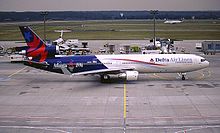



After burning in Athens for three weeks, HOC president Antonios Tzikas formally handed the flame to ACOG president Billy Payne on April 26. A lantern containing the flame was loaded onto The Centennial Spirit, a specially painted Delta Air Lines McDonnell Douglas MD-11, at Athens' Ellinikon International Airport early on the morning of April 27. The flight from Athens to Los Angeles International Airport lasted 14 hours, departing Athens at 4 a.m. local time and arriving in Los Angeles by 9 a.m. local time.[20][21]
From the airport, the flame was carried in a helicopter to Los Angeles Memorial Coliseum, site of the 1984 Olympic opening and closing ceremonies, for a nationally-televised ceremony to mark the beginning of the relay. ACOG attempted to arrange for the nude statues in front of the Coliseum to be covered during the event,[22] but the statues ultimately remained uncovered. Billy Payne lit the first torch from the lantern before passing it to Rafer Johnson, who had lit the cauldron in 1984, to run the first leg. Johnson passed the flame to Gina Hemphill Tillman, granddaughter of Jesse Owens, who had been the first torchbearer on the 1984 relay. Tillman passed it on to swimmer Janet Evans.[23]
Leaving the Coliseum, the torch was carried through Los Angeles to Santa Monica Pier, then along the Pacific coast.[24] At one point in Los Angeles, the torch was carried by Robert Zemeckis.[25] The first day of the relay continued until 4:59 a.m., when the run stopped for an hour in Huntington Beach before continuing on its way to San Diego.[26] Notable torchbearers in San Diego County included Wheel of Fortune hosts Pat Sajak and Vanna White in Oceanside[27] and 1936 Olympic athlete Kenny Griffin in Carlsbad.[28]
After roughly following the Mexican border to Yuma, Arizona, the torch made its first rail journey to Phoenix. Security was high, as an act of sabotage along the same tracks six months earlier had caused the deadly 1995 Palo Verde derailment.[29] In Kingman, Arizona, the route briefly followed the famous Route 66, before exiting the state at the Hoover Dam. It was carried across the rim of the dam by Martha Watson. That morning, to mark the torch's passage, the world's largest U.S. flag was unfurled for the first time across the dam's wall, but it had to be taken down due to high winds before the torch arrived.[3]: 16 [30]
The relay proceeded into Las Vegas, Nevada, where it was announced that the casinos would briefly dim their lights to create a more dramatic entrance for the torch, but did not ultimately do so.[3]: 16 [30] From Las Vegas, the flame was again loaded onto a special Union Pacific train which brought it across California, with occasional stops to run through larger cities, until it reached San Jose. The torch was carried on a cable car in San Francisco and was run across the Golden Gate Bridge before dawn the next morning.[31] After running to Sacramento, the torch made another rail journey to Eugene, Oregon. The route continued northward, on foot and by bicycle, through Portland and as far north as Seattle, Washington, where the torch crossed Puget Sound on the Seattle–Bremerton ferry, the only ferry ride along the cross-country route.[32] Cyclist Harley Sheffield dropped and broke the torch while riding with it across the Tacoma Narrows Bridge, an incident which received so much publicity that Sheffield was featured as a guest on The Tonight Show with Jay Leno.[33]
From Seattle, the flame traveled to the southeast by train. ACOG president Billy Payne joined the railway journey in Yakima, Washington.[34] The torch then passed through Idaho on its way to Salt Lake City, Utah, which was awarded the 2002 Winter Olympics shortly before the route was announced. Bart Conner and Nadia Comăneci, Olympic gymnasts who had recently married, carried the torch in Salt Lake City.[35] After crossing Wyoming, the relay visited Denver, Colorado and Colorado Springs, home of the United States Olympic Committee headquarters and the U.S. Olympic Training Center.
At Julesburg, the torch was picked up by riders of the National Pony Express Association, who carried it (along with a bag of commemorative letters addressed to patients at a children's hospital) on horseback to St. Joseph, Missouri. Like the original Pony Express, the riders traveled non-stop for 58 hours straight, from 9 p.m. on May 13 to 7 a.m. on May 16. While relay organizers had chosen this particular segment of the historic Pony Express route because it mostly ran alongside modern roads which could accommodate the caravan of support vehicles,[36] road conditions forced them to separate from the torch-bearing riders for some stretches.[37][38] At Rock Creek Station near Endicott, a horse was spooked and threw its rider, causing another torch to be broken.[39]
The torch traveled southward from St. Joseph into Kansas City, Missouri, then across Kansas and Oklahoma. The relay route, as initially announced, included a stop in Yale, Oklahoma, which organizers described as the "birthplace" of Jim Thorpe. Thorpe was actually born in Pottawatomie County, Oklahoma, near the town of Prague, and about 50 miles away from Yale, where Thorpe lived briefly as an adult.[1] Residents of Prague protested the decision and asked for the torch to be rerouted to their town. The relay organizers resisted these requests at first, saying that the route had already been carefully planned and could not be significantly altered,[40][41] but ultimately agreed to visit both Yale and Prague.[42][43]
In Oklahoma City, the torch was carried by first responders to the Oklahoma City bombing a year earlier.[44] Between Waco and Bryan, Texas, it was flown on a 1943 Stearman biplane.[45][46]
In Houston, the route met the Gulf Coast and continued eastward. A 310,000 US gallons (1,200,000 L; 260,000 imp gal) gasoline spillage in Gramercy, Louisiana, forced the relay to skip the town and take an unexpected 15-mile (24 km) detour along Interstate 10.[11][47] The torch rode on the historic St. Charles Streetcar in New Orleans.[45] Sister Helen Prejean ran with the torch in New Orleans.[48]
From New Orleans, the torch was transported mostly by rail through Mississippi and Arkansas, passing through Memphis and roughly following the Mississippi River northward. Starting from the Gateway Arch in St. Louis, the torch was intended to board the American Queen, the recently-built river steamboat which was the largest of its kind in history, to be transported up the Mississippi to Hannibal, Missouri, best known as the boyhood home of Mark Twain.[45] However, due to flooding on the river that prevented the American Queen from reaching St. Louis for the journey, an alternative route had to be devised that would still allow the torch and hundreds of honored guests to spend a day on the river. As a result, after reaching St. Louis, the torch was driven on a bus back down to Paducah, Kentucky, then rode on the American Queen from Paducah to Cairo, Illinois, before being bussed again to Hannibal.[49][50]
Former U.S. president Jimmy Carter was originally slated to carry the torch in his hometown of Plains, Georgia on July 12, a controversial inclusion given that Carter had led the 1980 Summer Olympics boycott against the Soviet Union while he was president. However, Carter later canceled his participation, choosing to accept an award from Lions Clubs International in Montreal that day instead.[51]
Opening ceremony
The end of the relay took place on July 19, 1996, at the opening ceremony in Atlanta. Four-time gold medal-winning discus thrower Al Oerter carried the torch to the stadium, passing it to Evander Holyfield. Holyfield was then joined by Voula Patoulidou and the pair passed the flame to American swimmer Janet Evans, the penultimate torchbearer, who carried it around a lap of the track and up a long ramp leading towards the northern end of the stadium.[52][53]
The identity of the final torchbearer had been kept secret and was only revealed when Muhammad Ali appeared at the top of the ramp. Ali, who had won gold at the 1960 Games in Rome and later developed Parkinson's disease, lit a mechanical torch which then travelled along a wire, lighting the cauldron at the top of a 116-foot (35 m) tower.[52][53] His appearance has been referred to as being one of the most inspiring, poignant, and emotional moments in Olympic history.[52][54][55]
Route in the United States
In the table below, only those locations where the torch was carried on foot, or otherwise stopped for a celebration, are listed. All locations are confirmed by the relay's official website as archived in December 1996, unless otherwise specified.[56]
References
- ^ a b Longman, Jere (9 December 1995). "OLYMPICS: Torch Run Takes a Wrong Turn". The New York Times. Retrieved 7 May 2012.
- ^ a b "1996 Olympic Torch Relay At a Glance". Washington Post. Retrieved October 7, 2013.
- ^ a b c d "The Official Report of the Centennial Olympic Games Volume II" (PDF). The Atlanta Committee for the Olympic Games. pp. 14–53. Retrieved October 7, 2013.
- ^ Pearlman, Robert Z. (April 23, 2013). "Cosmonauts May Carry Olympic Torch and 'Flame' on Spacewalk". Space.com. Retrieved October 8, 2013.
- ^ "NASA Johnson Space Center Oral History Project". NASA. Retrieved October 8, 2013.
- ^ "STS-78 crew holds up Olympic torch at SLF". V Like Vintage. Archived from the original on October 8, 2013. Retrieved October 8, 2013.
- ^ "Muhammad Ali Lights the Olympic Cauldron". International Olympic Committee. 2017-02-06. Retrieved 2018-03-09.
- ^ a b c d e f "The Official Report of the Centennial Olympic Games Volume I" (PDF). The Atlanta Committee for the Olympic Games. Retrieved April 15, 2024.
- ^ a b MacAloon, John J. "This flame, our eyes: Greek/American/IOC relations, 1984–2002, an ethnographic memoir", Bearing Light: Flame Relays and the Struggle for the Olympic Movement, Routledge, 2013.
- ^ Hong, Peter Y. (January 31, 1996). "Teacher to Carry Olympic Torch : Compton educator, nominated by one of her eighth-grade students, is first in Southland to be chosen for the honor". LA Times. Retrieved October 12, 2013.
- ^ a b c Johnson, Dirk (May 26, 1996). "15,000-Mile Olympic Torch Route Gives Lots of People Reasons to FeelGood". The New York Times. Retrieved October 7, 2013.
- ^ Pousner, Howard. "Coming to America", Atlanta Journal-Constitution, April 26, 1996, page H10.
- ^ Pousner, Howard. "Torch's trip to Atlanta a 42-state extravaganza", Atlanta Journal-Constitution, July 24, 1995, page C4.
- ^ a b c "Olympic Games Atlanta 1996". Olympic-Museum.de. Archived from the original on October 23, 2013. Retrieved October 7, 2013.
- ^ Cheakalos, Christina. "Sacred ceremony sparks flame's trip", Atlanta Journal-Constitution, March 31, 1996, page B12.
- ^ a b Wilson, Rusty. "An Olympic Fairy Tale: The 1996 Olympic Flame Relay in Greece", Journal of Olympic History 6.1, Winter 1998, pages 10-13.
- ^ Cheakalos, Christina. "Centennial glory: Competition reveals Greek pride, anger", Atlanta Journal-Constitution, April 7, 1996, page H1.
- ^ "Torch for Tewksbury", Montreal Gazette, April 4, 1996, page C1.
- ^ Cheakalos, Christina. "Greek legends, history inspire torchbearers", Atlanta Journal-Constitution, April 4, 1996, page B4.
- ^ Pousner, Howard. "Passing the torch: Payne will accept Olympic flame in a ceremony today in Greece", Atlanta Journal-Constitution, April 26, 1996, page H1.
- ^ Turner, Melissa. "Excitement builds as Atlanta delegation awaits flame", Atlanta Journal-Constitution, April 26, 1996, page H12.
- ^ Harvey, Randy. "Nude Statues Fail to Qualify for Torch Relay", Los Angeles Times, April 25, 1996, page A23.
- ^ "Symbolizing the Spirit: Flame Arrives to Ignite Olympic Torch", Associated Press, via The Oklahoman, April 28, 1996, Section B, page 9.
- ^ Simon, Stephanie, and Henry Weinstein. "L.A. Kicks Off Olympic Torch Run Across U.S.", Los Angeles Times, April 28, 1996, pages A1 and A22.
- ^ Downey, Mike. "He Carries the Torch, by 'Gump'", Los Angeles Times, April 24, 1996, pages C1 and C11.
- ^ a b Tawa, Renee. "Going for the Orange in the Torch Relay", Los Angeles Times, April 27, 1996, Orange County edition, pages A1 and A20.
- ^ a b "TV notables to gather in Oceanside for torch run", North County Times, April 25, 1996, page B1.
- ^ a b Diehl, Phil. "Former Olympian will carry torch", North County Times, April 27, 1996, pages B1 and B2.
- ^ Martz, Ron. "Torch on route of derailed train", Atlanta Journal-Constitution, April 30, 1996, page E4.
- ^ a b Pousner, Howard. "Emotions flow at Hoover Dam", Atlanta Journal-Constitution, May 2, 1996, page C8.
- ^ a b Auchmutey, Jim. "Gate crossing: Torch makes dawn journey over San Francisco bridge", Atlanta Journal-Constitution, May 5, 1996, page E12.
- ^ "Notebook: Tumble results in a brief flameout, but torch goes on", Atlanta Journal-Constitution, May 8, 1996, page B2.
- ^ "Torchbearer Ignites Interest By Snuffing Flame", Washington Post, May 10, 1996, Web. Retrieved April 18, 2024.
- ^ Auchmutey, Jim. "Payne accompanies rail caravan on Oregon-Idaho leg", Atlanta Journal-Constitution, May 10, 1996, page G3.
- ^ Auchmutey, Jim. "'Thanks for the day off, torch'", Atlanta Journal-Constitution, May 11, 1996, page D3.
- ^ a b c Chilcote, Gary. "Torch run follows mail trail", St. Joseph News-Press, May 13, 1996, page 1B.
- ^ Longino, Miriam. "As the flame rides the trail, crew relaxes a bit", Atlanta Journal-Constitution, May 16, 1996, page G4.
- ^ "Atlanta Needs Flame! Notes From a Long Torch Trip", The New York Times Magazine, July 7, 1996, Web. Retrieved April 18, 2024.
- ^ "Horse pitches a fit, breaks Olympic torch", Associated Press, via Macon Telegraph, May 16, 1996, page 1C.
- ^ Hutchison, Mark A. "Route Inflames Thorpe Fans; Torch Panel Unmoved", The Oklahoman, November 13, 1995, front page and page 2.
- ^ Kindred, Dave. "Dishonoring Jim Thorpe", Atlanta Journal-Constitution, December 1, 1995, page C4.
- ^ "Torch Run Sites Announced; Olympic Committee Adds Prague, OK, to List", Associated Press, via The Oklahoman, March 1, 1996, Web.
- ^ Kindred, Dave. "Town's fight for Thorpe's legacy earns spot on torch path", Atlanta Journal-Constitution, May 19, 1996, page E13.
- ^ Downey, Maureen. "Relay honors bomb victims, survivors", Atlanta Journal-Constitution, May 20, 1996, page D4.
- ^ a b c [https://www.washingtonpost.com/wp-srv/sports/olympics/longterm/torches/travels.htm "'96 Torch Travels by Train, Plane ... and Pony Express"], Atlanta Committee for the Olympic Games, via the Washington Post, Web, undated. Retrieved April 19, 2024.
- ^ a b Pierson, Marla. "Torch's day begins at Fort Worth Stockyards", Waco Tribune-Herald, May 21, 1996, page 6A.
- ^ "Pipeline rupture reroutes torch", Associated Press, via Southwest Daily News, May 25, 1996, pages 1 and 2.
- ^ Pousner, Howard. "Revelers throng streets of Big Easy to greet relay", Atlanta Journal-Constitution, May 25, 1996, page D9.
- ^ Pousner, Howard. "Riverboat gamble: Team scrambles for new route as the Mississippi rises", Atlanta Journal-Constitution, May 29, 1996, page C3.
- ^ Pousner, Howard. "River fails to extinguish flame's appeal", Atlanta Journal-Constitution, May 31, 1996, page E3.
- ^ Pousner, Howard. "Flame warms the hearts of big crowds", Atlanta Journal-Constitution, May 4, 1996, page C8.
- ^ a b c "The Official Report of the Centennial Olympic Games Volume II" (PDF). The Atlanta Committee for the Olympic Games. pp. 68–69, 132. Retrieved October 7, 2013.
- ^ a b Weinberg, Rick. "8: Ali lights the flame at the 1996 Olympics". ESPN. Retrieved October 8, 2013.
- ^ Thornburgh, Tristan (July 19, 2013). "On Today's Date: Muhammad Ali Lights the Torch at the 1996 Olympics". Bleacher Report. Retrieved October 7, 2013.
- ^ Luckhurst, Samuel (May 31, 2012). "London 2012 Olympics Countdown: Muhammad Ali Prompts Tears At Atlanta 1996". Huffington Post. Retrieved October 8, 2013.
- ^ 1996 Olympic Torch Relay official website, archived at the WayBack Machine on December 19, 1996.
External links
- 1996 Olympic Torch Relay official website, archived at the WayBack Machine on December 19, 1996. Contains detailed maps and information about each day of the relay.


